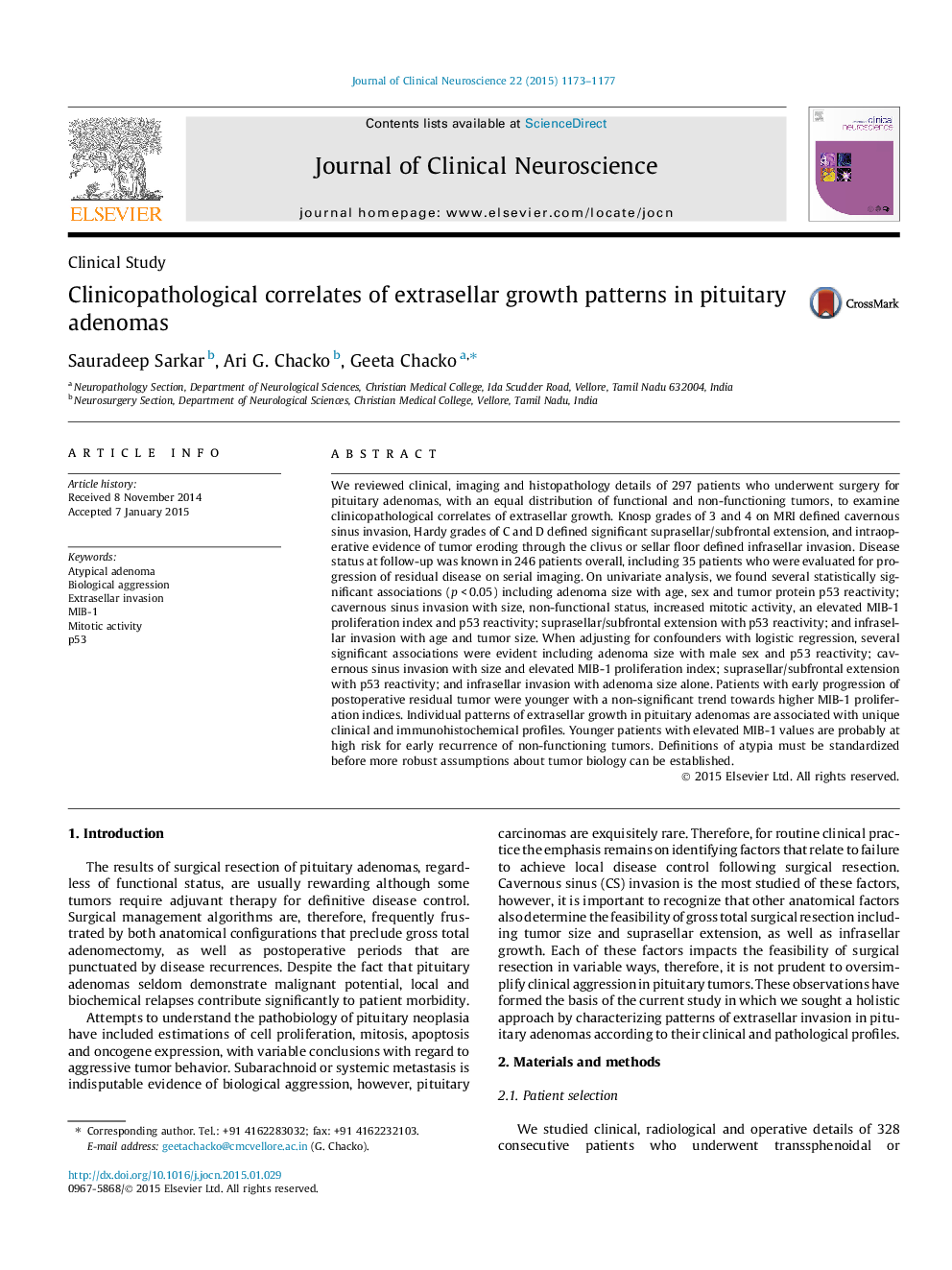| Article ID | Journal | Published Year | Pages | File Type |
|---|---|---|---|---|
| 3059031 | Journal of Clinical Neuroscience | 2015 | 5 Pages |
We reviewed clinical, imaging and histopathology details of 297 patients who underwent surgery for pituitary adenomas, with an equal distribution of functional and non-functioning tumors, to examine clinicopathological correlates of extrasellar growth. Knosp grades of 3 and 4 on MRI defined cavernous sinus invasion, Hardy grades of C and D defined significant suprasellar/subfrontal extension, and intraoperative evidence of tumor eroding through the clivus or sellar floor defined infrasellar invasion. Disease status at follow-up was known in 246 patients overall, including 35 patients who were evaluated for progression of residual disease on serial imaging. On univariate analysis, we found several statistically significant associations (p < 0.05) including adenoma size with age, sex and tumor protein p53 reactivity; cavernous sinus invasion with size, non-functional status, increased mitotic activity, an elevated MIB-1 proliferation index and p53 reactivity; suprasellar/subfrontal extension with p53 reactivity; and infrasellar invasion with age and tumor size. When adjusting for confounders with logistic regression, several significant associations were evident including adenoma size with male sex and p53 reactivity; cavernous sinus invasion with size and elevated MIB-1 proliferation index; suprasellar/subfrontal extension with p53 reactivity; and infrasellar invasion with adenoma size alone. Patients with early progression of postoperative residual tumor were younger with a non-significant trend towards higher MIB-1 proliferation indices. Individual patterns of extrasellar growth in pituitary adenomas are associated with unique clinical and immunohistochemical profiles. Younger patients with elevated MIB-1 values are probably at high risk for early recurrence of non-functioning tumors. Definitions of atypia must be standardized before more robust assumptions about tumor biology can be established.
